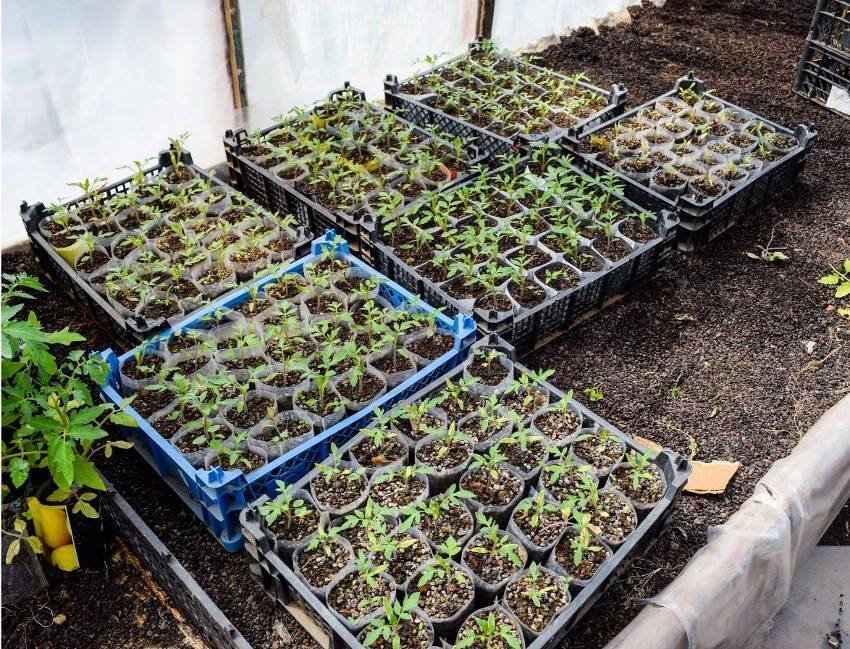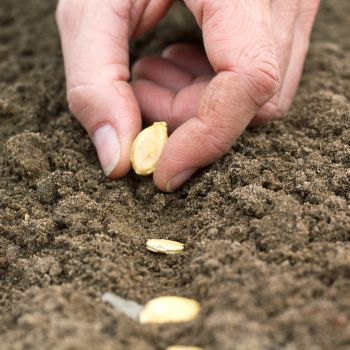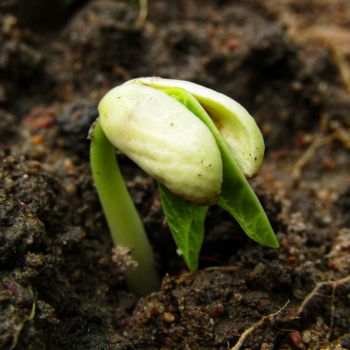Growing an adult plant from a tiny seed can often seem like a form of magic. But while nature is amazingly productive, it's not infallible. Many first-time gardeners enthusiastically sow their seeds and expect foolproof germination in a few days, only to become frustrated when seedlings fail to appear.
Thankfully, most of the problems preventing healthy germination are well known and easy to combat. Get the conditions right for your seeds by avoiding the following nine mistakes, and nature will step in to do its work.
1) Sowing in the Wrong Soil Temperature
All seeds have a preferred soil temperature which acts as a starter for germination, helping the plant time its growth to match the seasons. If your soil is too cold for the seed you've sown, germination simply won't happen, no matter how long you wait. In most cases, a soil temperature of 15-25C is required, but check each seed for the exceptions and a more precise figure.
At the other end of the scale, if the soil gets too hot, your seeds will bake and die either before germination or shortly after, so bear this in mind if you're sowing under glass.
However, it's important not to confuse air temperature and soil temperature. For outdoor sowing early in the year, the soil can be significantly cooler than the air, while the compost in containers can heat up - and even overheat - surprisingly quickly in direct sunlight.
2) Watering Issues
Some level of dampness in the soil is essential for seeds to germinate. What's more, after germination the seedling's immature root system needs continuous moisture, and even just a few hours of dry soil can be fatal.
On the other hand, waterlogged soil can set the seed rotting before it has a chance to germinate, as well as potentially fostering many other other harmful moulds and diseases.
With seeds and seedlings, watering a little and often is the surest way for successful germination and good health, so make it a daily part of your routine.
3) Poor Soil Quality
Using a good-quality soil gives your seeds the best start they can have. In the garden, rake the soil to a fine texture so that it's light and airy, and remove as many stones and other debris as you can.
When sowing in containers, use a fine-grade potting compost rather than soil brought in from the garden. For particularly tiny seeds, it can be useful to mix vermiculite into the compost to further lighten its texture, so the seeds meet less resistance as they sprout.
But in all cases, use fresh, weed-free soil whenever you can to avoid competition from uninvited guests. If you re-use last year's compost you risk sowing your seeds into soil packed with wild seeds, not to mention the eggs of slugs and other pests.
4) Using Contaminated Containers
Similarly, using clean containers is the best way to prevent disease and pests from building up when sowing under cover. Make an annual springtime ritual of sorting through your containers and seed trays, and thoroughly cleaning the ones you want to keep.
5) Sowing Too Deep
Some seeds need more light than others in order to germinate. This affects the depth a seed should be sown at: too deep, and it won't get the light it needs to burst into life. In general terms, a seed should be sown about two or three times as deep as it is wide, but the seed packet will give a more precise sowing depth.
If you're sowing more than a centimetre or so below the surface, don't press the earth down too hard afterwards. Seedlings are surprisingly strong, but heavily compacted soil may strangle their growth before it's even begun.
And if seeds need to be sown on or near the surface, such as with oregano or strawberry, gently tamp them down after sowing to ensure they make good contact with the soil.
6) Sowing Too Soon
However, a lack of light can cause problems even after successful germination. Plants grown in shady conditions, such as indoors, will race upwards to try and catch the extra sunlight they need. This can lead to thin, spindly plants which lack strength and vigour.
These 'leggy' seedlings can easily collapse under their own weight, usually killing the plant. But even if they survive long enough to be transplanted to a sunnier location, they often fail to thrive.
Leggy seedlings are most often the result of sowing indoors too soon, making the seedlings wait too long before they're transplanted. In general, plants are ready to be moved to their final location between four and eight weeks after germination, so time your sowing to take this into account.
7) Using the Wrong Sowing Method
Seeds can be sown direct into open soil, or started off under cover in seed trays or small pots. Sowing indoors can make it easier to control conditions, but it isn't always the best choice.
Some seedlings, particularly root vegetables, quickly develop long, fine roots which are easily damaged when the time comes to transplant them outdoors. Other plants simply prefer to be sown in their final location, going into a form of shock if they're transplanted, with growth slowing or halting until they recover.
However, other seedlings such as chillies develop a stronger root ball when they're sown in a small container and then potted on to a bigger home as they grow.
Check the seed packet for the preferred sowing instructions, and although with experience you can often take your own path, for beginners it's best to stick to the recommendations.
8) Not Protecting Against Pest Damage
But even with your most careful sowing precautions, there are plenty of pests which can undo all your work in just a few minutes. Birds, snails, caterpillars, and even household pets can all destroy seeds and seedlings in moments, so take all the precautions you can.
For example: cover exposed seed beds with netting to protect from birds; patrol your garden daily to collect slugs and snails; keep a lookout for caterpillars, aphids, and other pests on established plants which could threaten seedlings as they emerge.
If unprotected seeds sown outdoors are stubbornly overdue in showing their faces, there's a good chance they've already sprouted but been demolished by pests before you've even noticed.
9) Not Labelling Properly
Lastly, whenever you sow a seed make sure you add a readable, weatherproof label to the pot or row. You won't necessarily recognise which seedling is which after germination, and this can make things difficult when deciding how far apart to transplant them, for example. Also, add the sowing date to the label so you'll know if germination becomes seriously overdue.
Plants want to grow, and there's no great mystery to starting them from seed. Don't make things hard for them with these sowing mistakes, and your seeds will reward you with a clutch of thriving young plants.
.jpg)






